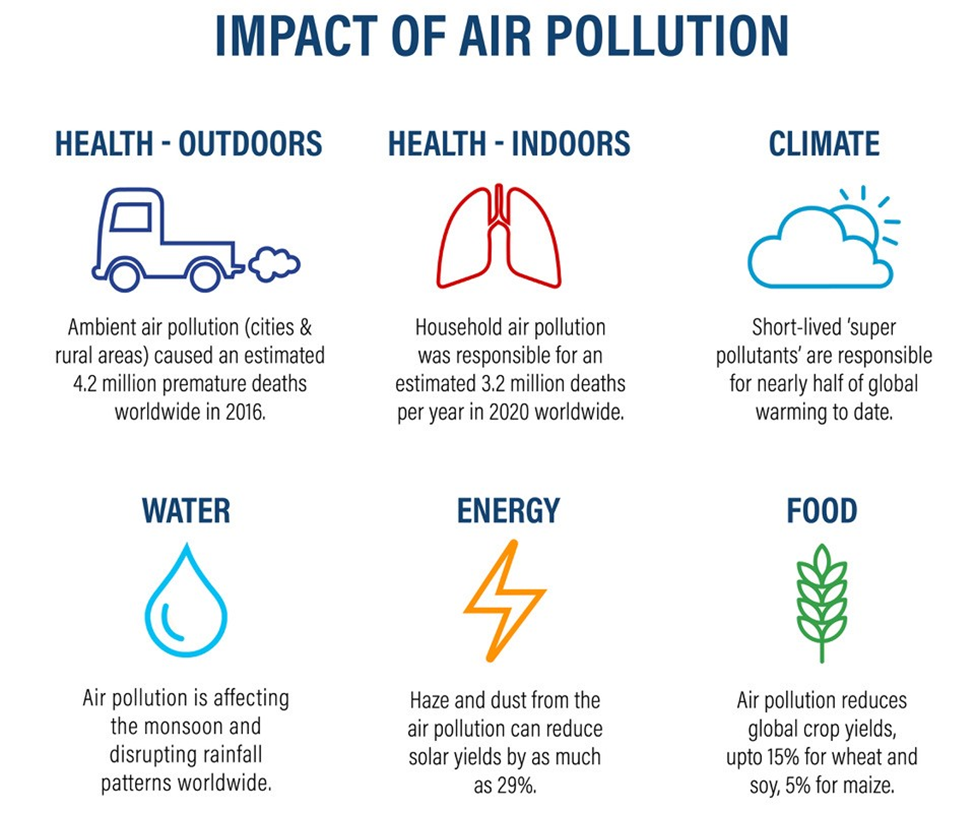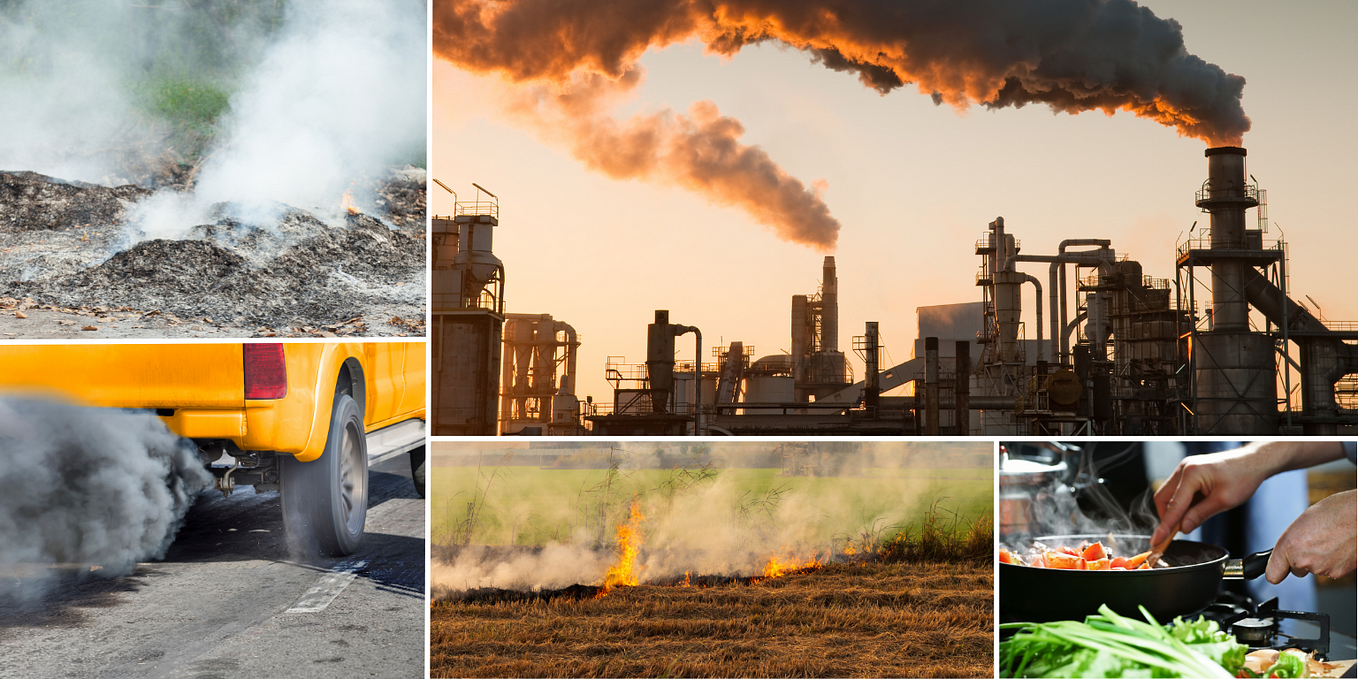Context:
The Supreme Court of India has consistently upheld the Right to Clean Air as essential to the Right to Life under Article 21. Recently, the Court admonished the Centre and the governments of Delhi and its neighboring states for not ensuring pollution-free air, with National Capital Region (NCR) residents enduring "very poor" air quality for days. The apex court attributed Delhi’s worsening air pollution to the combined failure of authorities to implement effective, year-round strategies, despite measures like the Commission on Air Quality Management (CAQM). Although stubble burning—a key seasonal factor—has reduced in some areas, the Court emphasized that these incremental improvements fall short of producing noticeable changes.
Delhi’s Air Quality Crisis:
Delhi's air quality often hovers between "Very Poor" and "Severe" categories, especially during winter, driven by a range of factors. The daily Air Quality Index (AQI) reveals concerning trends, with PM2.5 levels, a key pollutant, often exceeding 300 µg/m³—far above the WHO’s recommended limit. Stubble burning accounts for up to 35% of the seasonal pollution, alongside emissions from vehicles, construction, industry, and waste burning. Despite isolated efforts, overall pollution levels continue to rise, threatening public health and quality of life.

Factors Contributing to Delhi's Air Pollution:
1. Crop Residue Burning: Farmers in nearby states set fields on fire to clear stubble for the next planting season. These pollutants drift towards Delhi, severely impacting air quality.
2. Vehicular Emissions: With over 10 million vehicles on Delhi’s roads, vehicular emissions are a persistent source of pollution.
3. Construction Dust: Ongoing urban development projects generate high levels of dust, particularly during dry months.
4. Industrial Emissions: Industries often use non-compliant fuels, contributing to smog and airborne contaminants.
5. Firecracker Pollution: Fireworks during festivals like Diwali contribute to heightened pollution levels, especially in winter.
6. Waste and Biomass Burning: Burning municipal and organic waste further adds to airborne pollutants.
7. Weather and Geographic Factors: Delhi’s unique geographical setting—surrounded by the Himalayas on one side—traps pollutants due to temperature inversions and low wind speeds in winter.
Health and Environmental Impacts of Poor Air Quality
Air pollution poses severe health risks, including respiratory diseases, cardiovascular problems, and long-term effects like lung cancer and decreased immunity. Vulnerable populations, such as children and the elderly, face heightened risks. Air pollution also affects vegetation, with nitrogen oxides from vehicles and industries leading to eutrophication in water bodies. Additionally, persistent smog impacts aviation and daily commutes.
Current Mitigation Efforts: Graded Response Action Plan (GRAP) and CAQM
· Delhi’s Graded Response Action Plan (GRAP), implemented since 2017, proposes various actions based on AQI thresholds. For instance, during severe pollution levels, authorities restrict construction, impose school closures, and implement vehicle odd-even schemes. Recently, the CAQM invoked Stage-II of GRAP to mitigate pollution. Measures include road sweeping, strict dust control at construction sites, enhanced traffic management, and promoting public transport.
· The Commission on Air Quality Management (CAQM), established in 2020, is tasked with coordinating efforts between NCR states. It addresses the overlapping jurisdictional issues that previously hindered cross-state cooperation. However, the Supreme Court has criticized the CAQM’s limited effectiveness, calling for stronger measures to ensure sustained improvements.
Persistent Challenges and Gaps
· While GRAP and CAQM provide frameworks, implementation issues persist. The SC highlighted the need for year-round measures, not just seasonal responses. Additionally, enforcing penalties for stubble burning and encouraging alternatives like subsidized machinery remain challenging. Political disagreements among NCR states also complicate coordination. Farmers require more consistent incentives to transition to sustainable practices, and industries need stricter compliance checks.
· Despite rising awareness, public adherence to environmental regulations and adoption of cleaner alternatives remain low. Delhi’s public transport infrastructure, essential to reducing vehicular emissions, requires major investment to meet the city's demand. Furthermore, limitations in monitoring and penalizing construction violations contribute to ongoing pollution from construction dust.
Proposed Long-Term Solutions
1. Boost Public Transport Investment
- Expand Public Transport Networks: Invest in and expand electric buses, metro lines, and cycling lanes to offer viable alternatives to personal vehicles.
- Encourage Non-Motorized Transport: Develop pedestrian-friendly infrastructure and cycling tracks to minimize vehicle dependency.
2. Promote Technological and Agricultural Innovation
- Alternative Agricultural Practices: Offer incentives for farmers to adopt machinery like seeders that eliminate the need for burning.
- Early Season Intervention: Proactively address crop residue burning before the onset of winter, rather than reacting once pollution spikes.
3. Strengthen Industrial Regulations
- Mandate Cleaner Technologies: Enforce the use of pollution-control technologies and cleaner fuels in industries.
- Increase Inspection Frequency: Regularly inspect industrial sites for compliance, focusing on pollutant-heavy areas.
4. Enhance Public Awareness and Behavioral Change
- Educational Campaigns: Educate citizens about the impact of pollution on health and the environment to promote voluntary behavior changes, like reduced vehicle use.
- Promote Community Involvement: Engage residents in tree planting, waste reduction, and local clean-up initiatives to foster shared responsibility.
5. Develop Efficient Air Quality Monitoring
- Expand Monitoring Stations: Increase the number of air quality monitoring stations for real-time data to guide targeted interventions.
- Transparency and Data Sharing: Share AQI updates with the public to promote informed actions and community-driven solutions.
6. Enact Stringent Construction Regulations
- Limit Construction During High-Pollution Seasons: Restrict non-essential construction work from October to January when air quality typically worsens.
- Dust Suppression Requirements: Enforce strict dust control measures at construction sites, with penalties for non-compliance.
Conclusion
Delhi’s persistent air quality crisis reflects the complex interplay between seasonal factors like crop burning, ongoing emissions from vehicles and industries, and the limitations of emergency responses. Tackling air pollution requires a proactive and holistic approach, combining regulatory measures, public awareness, infrastructure upgrades, and cross-state coordination. Enhanced implementation of GRAP and CAQM guidelines, combined with long-term investments in public transport and technological innovations, can lead to sustainable improvements. Ultimately, addressing Delhi’s pollution crisis is a multifaceted task that calls for coordinated action from both authorities and residents alike to ensure a healthier, cleaner future.
|
Probable questions for UPSC Mains exam: "The right to clean air is a fundamental aspect of the right to life." Critically examine the role of the judiciary and government bodies in ensuring this right in the context of India's air quality crisis. |







